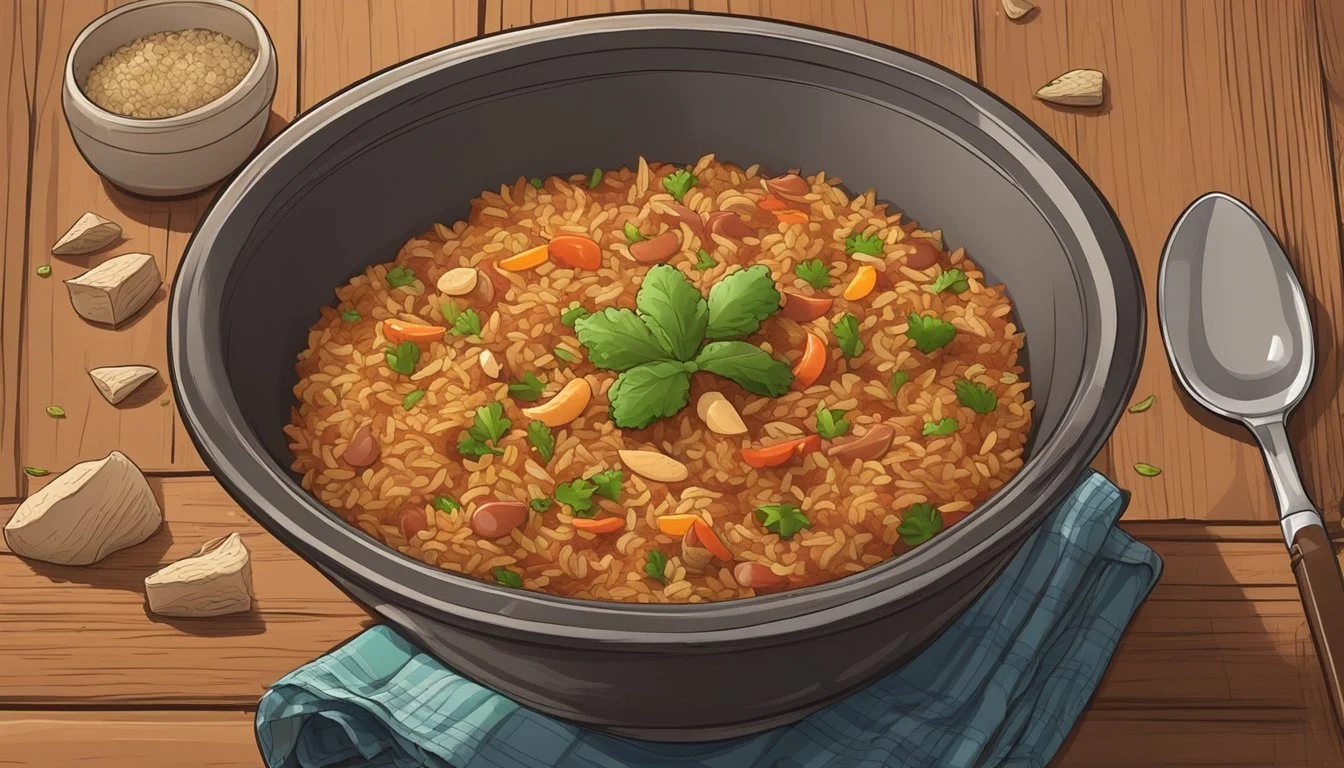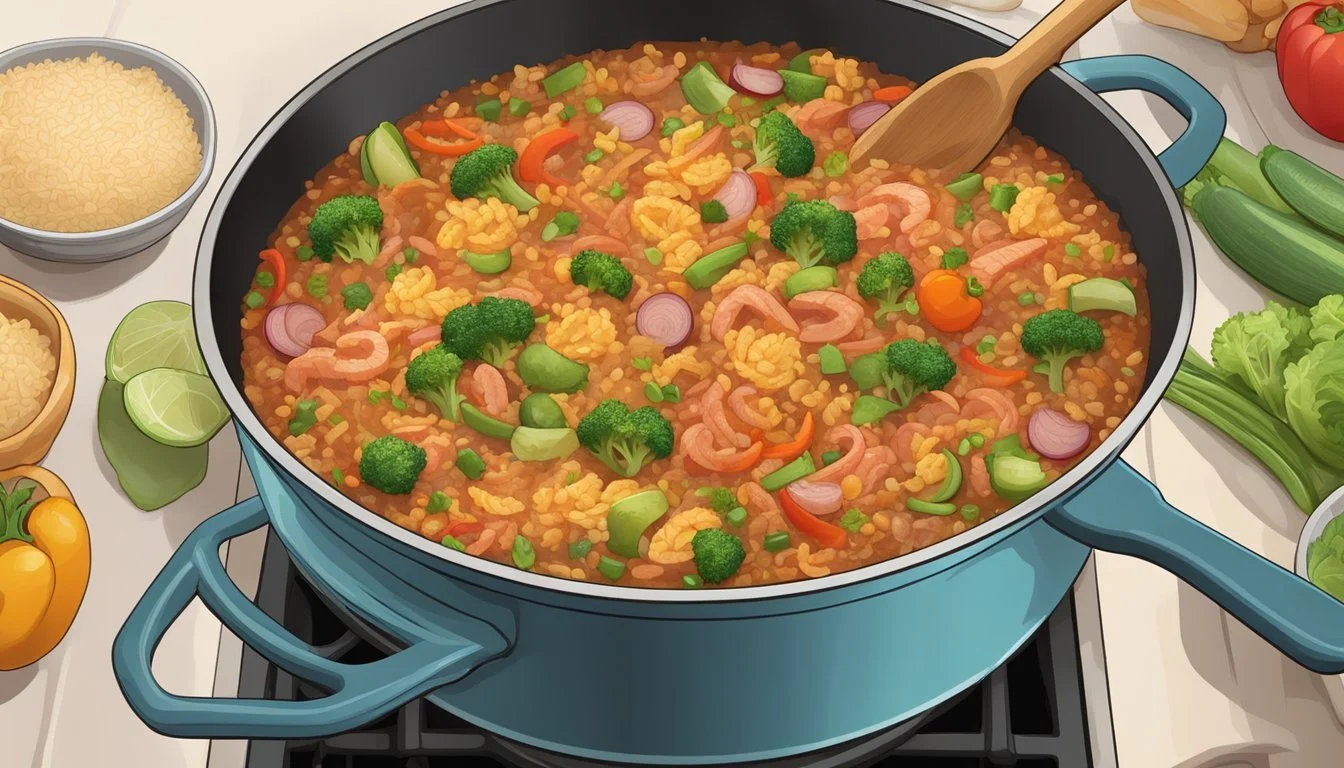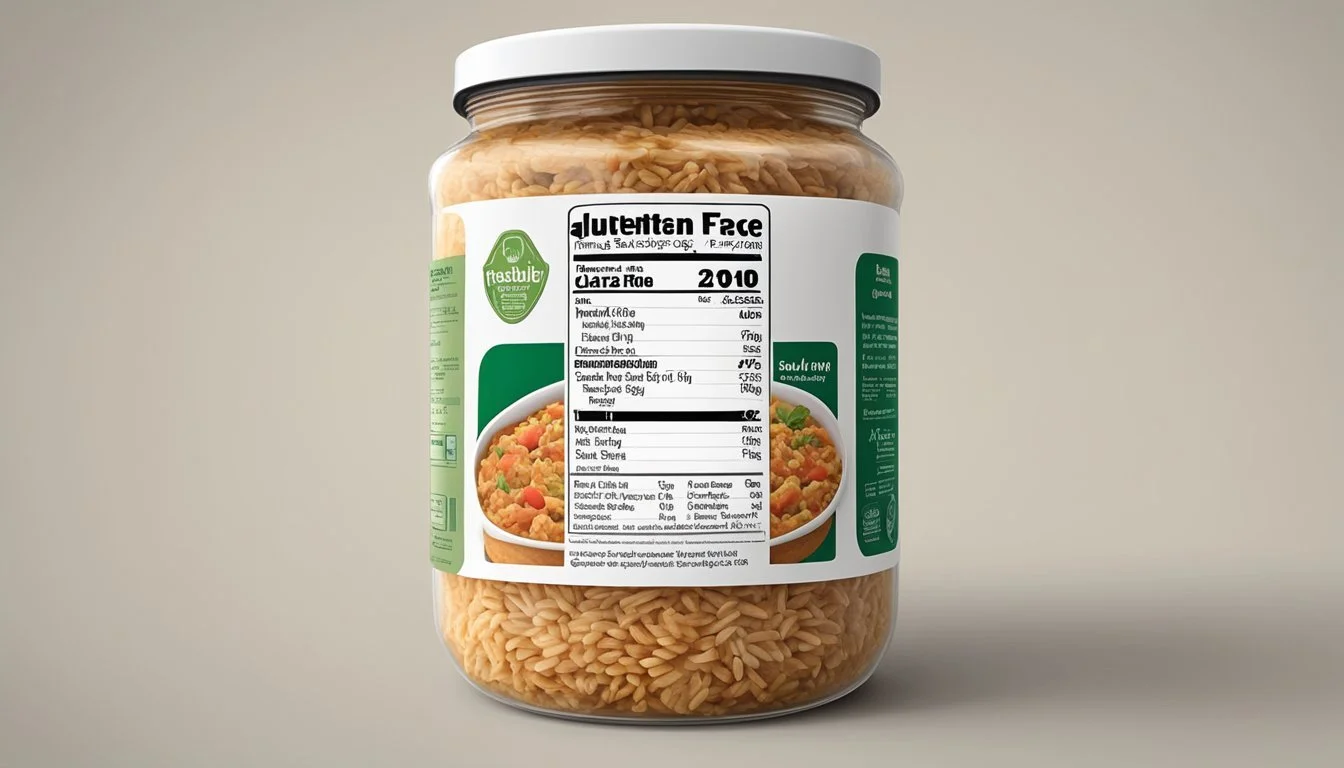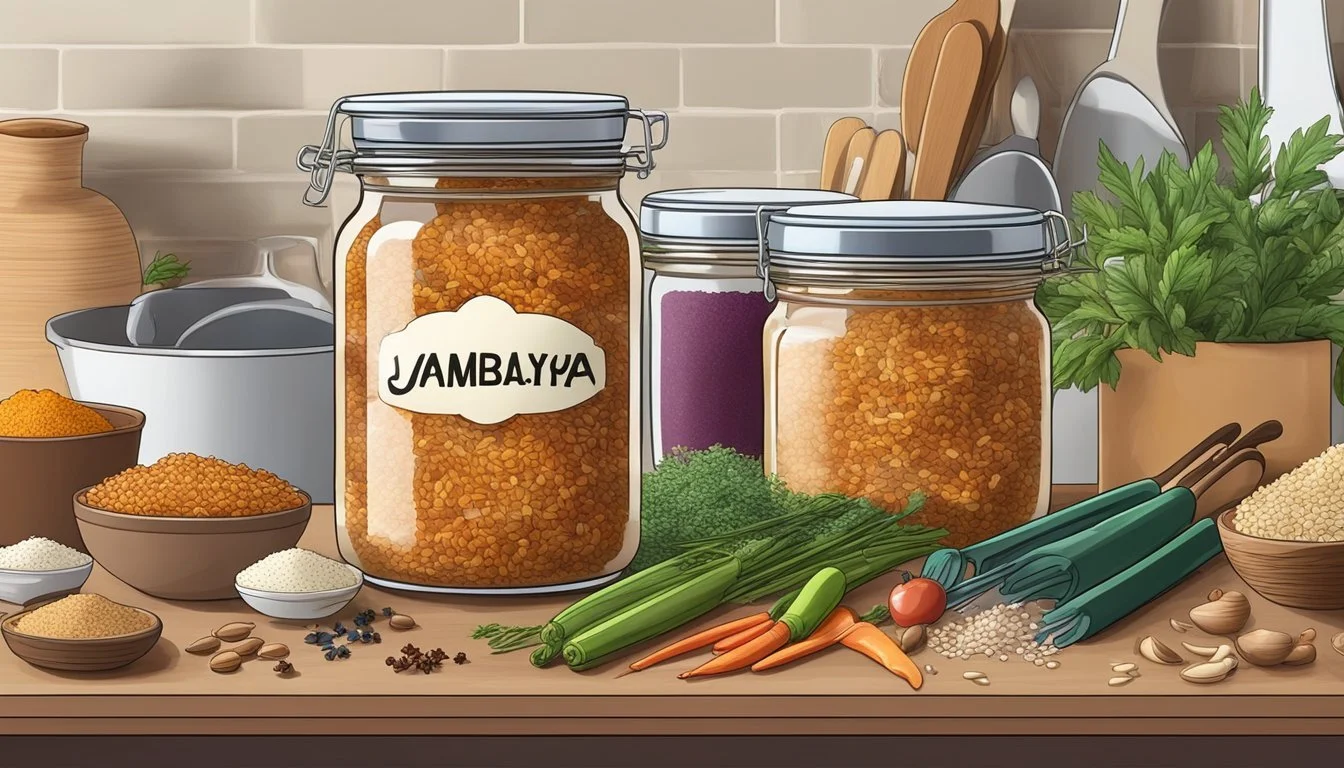How Long Does Gluten-Free Jambalaya Last?
Expert Storage Tips
Gluten-free Jambalaya, a delicious and hearty dish, usually combines chicken, sausage, shrimp, and rice in a flavorful concoction. This gluten-free meal is not only perfect for those with celiac disease, but also for anyone looking for a satisfying dinner that's both tasty and safe from gluten.
When you whip up a batch of gluten-free jambalaya, you'll want to know how long it lasts. It typically stays fresh for about 3-4 days in the refrigerator when stored in an airtight container. For extended shelf life, you can freeze it for up to three months, making it convenient for quick weeknight dinners.
Whether savoring the vibrant flavors immediately or enjoying leftovers, this gluten-free dinner option offers both versatility and peace of mind for those managing gluten sensitivities.
Understanding Gluten-Free Jambalaya
Gluten-free jambalaya is a flavorful and hearty dish rooted in Cajun and Creole culinary traditions. This version is tailored for individuals with gluten sensitivities, including those with celiac disease, while preserving the rich flavors and textures of the original recipe.
Ingredients and Substitutes
Traditional jambalaya typically includes chicken, andouille sausage, shrimp, rice, bell pepper, onion, celery, garlic, diced tomatoes, and various seasonings. To make it gluten-free, simply ensure that all ingredients and seasonings used are certified gluten-free.
Andouille sausage can often contain gluten, so opt for a certified gluten-free brand. For those avoiding nightshades or other allergens, replacing bell peppers or tomatoes with safe alternatives like zucchini or carrots is possible. While a flour-based roux is unnecessary for this rice-based dish, using gluten-free thickening agents, if needed, can help achieve desired consistency.
Gluten-Free Considerations
It is crucial for individuals with celiac disease or gluten sensitivity to verify that all ingredients are free from gluten contamination. Always check labels and, when in doubt, consult the manufacturer's website or customer service.
Cross-contamination can occur during meal preparation. Ensure all utensils, cutting boards, and cooking pots used are thoroughly cleaned before starting the recipe. Use gluten-free certification as a guide when choosing ingredients like chicken broth, tomato paste, and prepared seasonings.
Culinary Origins
Jambalaya is a beloved Louisiana Creole dish with deep roots in New Orleans' Cajun and Creole cuisines. It's a one-pot meal that showcases the region's multicultural influences.
The dish typically marries French, Spanish, and West African culinary practices, featuring rice as a staple ingredient. The inclusion of proteins like chicken, andouille sausage, and shrimp provides a balanced and hearty flavor profile. Its vibrant spice blend and use of local vegetables make jambalaya an enduring favorite in Southern cooking.
By preparing a gluten-free version, you can enjoy a wholesome and authentic Creole jambalaya without compromising dietary needs. This adaptation retains the essence of the classic dish while making it accessible to more people.
Essential Cooking Techniques
To create a delectable gluten-free jambalaya, mastering a few essential cooking techniques is crucial. These techniques focus on preparing the base, cooking the proteins, and allowing time for simmering and flavor development.
Preparing the Base
Creating a strong base for your jambalaya begins with utilizing the "holy trinity" of Cajun cooking: bell peppers, onions, and celery. These vegetables are finely chopped and sautéed in olive oil or butter until they become fragrant and slightly translucent.
A roux can be made by combining equal parts fat (such as butter or olive oil) and gluten-free flour. This mixture is cooked until it turns a light brown color, enhancing both the texture and flavor. Adding minced garlic at this stage intensifies the Cajun flavor. Incorporating diced tomatoes and chicken broth provides a rich and savory liquid base necessary for simmering.
Cooking the Proteins
Properly preparing the proteins is essential for a balanced jambalaya. Common choices include chicken, andouille sausage, and shrimp.
Chicken and andouille sausage should be cubed and browned first in a hot skillet with a small amount of olive oil. This step seals in the juices and adds a delightful char. The browned meats are then removed and set aside.
Shrimp is more delicate and cooks quickly. It should be added towards the end to prevent overcooking. All proteins should be seasoned with a robust Cajun seasoning blend, containing paprika, cayenne pepper, thyme, and oregano to ensure a well-rounded flavor profile.
Simmering and Flavor Development
The final and most crucial stage is simmering, which allows all ingredients to meld together, producing a harmonious and flavorful dish.
Once the proteins are browned and the base is prepared, everything is combined in a large pot or slow cooker. Additional chicken broth is added to ensure adequate liquid for simmering. Bay leaves and optional herbs like thyme boost the flavor complexity.
Cooking on low heat for several hours, or using a slow cooker, ensures that all elements are well integrated. If using a stovetop method, maintaining a gentle simmer is key to preventing the dish from burning or sticking. This slow cooking process deepens the flavors, making the jambalaya rich and satisfying.
Proper Storage Techniques
Proper storage of gluten-free jambalaya ensures it remains safe and delicious. Key points include cooling it down quickly, refrigerating it correctly, and understanding the best practices for freezing.
Cooling Down
After cooking, allow the gluten-free jambalaya to cool down quickly rather than letting it sit at room temperature for an extended period. Rapid cooling minimizes the risk of bacterial growth. Transfer the jambalaya to shallow containers to aid faster cooling.
Avoid tightly covering the containers while the jambalaya is still hot. Leaving them slightly ajar allows heat to escape. Once the jambalaya reaches room temperature, seal the containers completely to maintain freshness.
Refrigeration
Refrigerate the jambalaya as soon as it cools down. Use airtight containers to prevent cross-contamination and to keep the flavors intact. Properly stored jambalaya in the fridge lasts for 3 to 4 days.
Labeling the containers with dates helps track how long the jambalaya has been stored. Ensure the refrigerator maintains a temperature of 40°F (4°C) or below to ensure food safety.
Freezing Jambalaya
For longer storage, freezing is an effective option. Store the jambalaya in freezer-safe bags or containers. Remove as much air as possible before sealing to prevent freezer burn.
Divide the dish into meal-sized portions for easier thawing and reheating. Frozen jambalaya maintains its quality for up to 3 months. Label the containers with the freezing date to monitor storage times. To reheat, thaw the jambalaya in the fridge overnight and then reheat thoroughly on the stovetop or in the microwave.
Shelf Life of Gluten-Free Jambalaya
Gluten-free jambalaya has a varying shelf life depending on its storage method, impacting its quality and safety for consumption. Refrigerating or freezing jambalaya can extend its usability, while proper reheating methods ensure it remains delicious and safe to eat.
Refrigerated Jambalaya
Refrigeration is an effective way to prolong the shelf life of gluten-free jambalaya. When stored in an airtight container, it typically lasts 3 to 4 days in the refrigerator. This time frame helps maintain its quality and flavor while preventing the growth of harmful bacteria. For optimal results, place the jambalaya in the refrigerator promptly after cooking and cool it down to 40°F (4°C) within two hours to ensure safety.
Frozen Jambalaya
Freezing gluten-free jambalaya is an excellent method to extend its shelf life up to 3 months. To freeze, allow the jambalaya to cool completely before transferring it to an airtight container or heavy-duty freezer bag. Label the container with the date to keep track of its storage duration. By freezing, you can retain much of its original texture and flavor. When ready to consume, proper defrosting is crucial—use the refrigerator or a microwave's defrost setting for best results.
Reheating Methods
When reheating gluten-free jambalaya, ensure it reaches an internal temperature of 165°F (74°C) to guarantee safety. Various methods can be used:
Microwave: Heat in short intervals, stirring occasionally to promote even heating.
Stovetop: Reheat on medium heat, adding a splash of water or broth to keep the jambalaya moist.
Oven: Bake at 350°F (175°C) in a covered dish to avoid drying out the dish.
Proper reheating not only ensures safety but also preserves the flavor and texture of the jambalaya, making it as enjoyable as when it was first cooked.
Additional Tips and Tricks
To maximize enjoyment and convenience, proper care and a few tweaks can greatly improve the leftovers or enhance dietary compliance when storing gluten-free jambalaya.
Enhancing Flavor After Storage
Leftover jambalaya can sometimes lose its initial zest. To revive it, reheat the dish slowly on the stovetop or in the microwave, adding a splash of chicken broth to keep it moist. Fresh herbs such as parsley or cilantro can be added just before serving for a burst of color and flavor. Consider utilizing spices like cumin or additional Cajun seasoning to bring back the original kick. Hot sauce can also add a vibrant, tangy edge that may have faded.
Serving Suggestions
Pairing with the right side dishes can elevate the dish. Cornbread is a classic accompaniment that complements the spicy and savory notes of jambalaya. Additionally, simple sides like a green salad with a light vinaigrette or steamed vegetables such as broccoli or green beans can balance the meal's richness. For a heartier option, serve with dairy-free coleslaw to cater to lactose-intolerant guests while providing a creamy texture.
Adjustments for Dietary Restrictions
To make jambalaya suitable for those with celiac disease or other dietary restrictions, several adjustments can be made. Use a dairy-free butter substitute if the original recipe calls for butter. Ensure all spices and seasonings are labeled gluten-free. When incorporating vegetables, opt for fresh produce rather than pre-packaged mixes that may contain gluten. For additional protein, include chicken or seafood, verifying it is prepared without gluten-containing ingredients or coatings.
These measures can help ensure that the dish remains inclusive and enjoyable for all guests.
Incorporating Gluten-Free Jambalaya Into Your Diet
Incorporating gluten-free jambalaya into your diet is a flavorful way to enjoy a balanced diet rich in vegetables, whole grains, and lean proteins. This dish can be a part of your weekly meal prep and provides various options for nutritious meals throughout the week.
Meal Planning
Gluten-free jambalaya can be integrated into weekly meal prep routines to save time and ensure balanced meals. Preparing a large batch of jambalaya at the start of the week provides a foundation for multiple meals.
Dividing the jambalaya into individual portions helps control serving sizes and makes it simple to grab a quick meal. This approach aids in maintaining a consistent and nutritious diet without the stress of daily cooking.
Creative Leftover Ideas
Leftover gluten-free jambalaya opens up opportunities for varied and exciting next-day meals. It can be used as a stuffing for bell peppers or mixed with scrambled eggs for a hearty breakfast.
Transforming leftovers into lunch options like jambalaya wraps or combining them with leafy greens for a jambalaya salad creates diverse meals while minimizing waste.
Health Benefits
Gluten-free jambalaya offers several health benefits due to its ingredients. Whole grains, such as brown rice, provide essential nutrients and dietary fiber, promoting healthy digestion.
Including vegetables like bell peppers, celery, and tomatoes adds vitamins and antioxidants to the diet. Lean proteins, such as chicken or shrimp, contribute to muscle building and repair. This combination supports a nutritionally balanced diet, essential for overall well-being.








